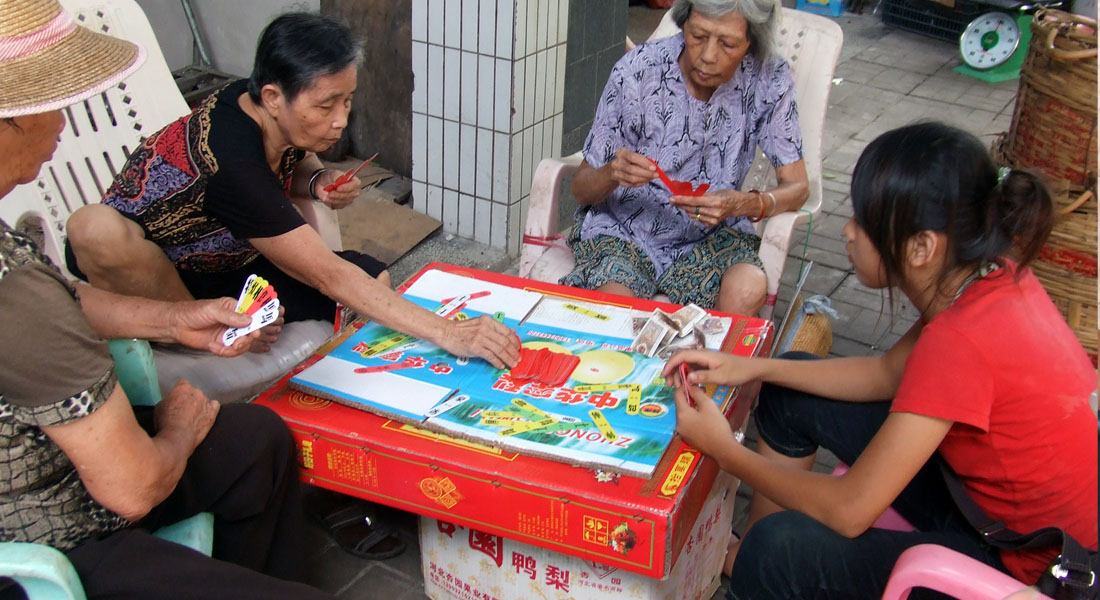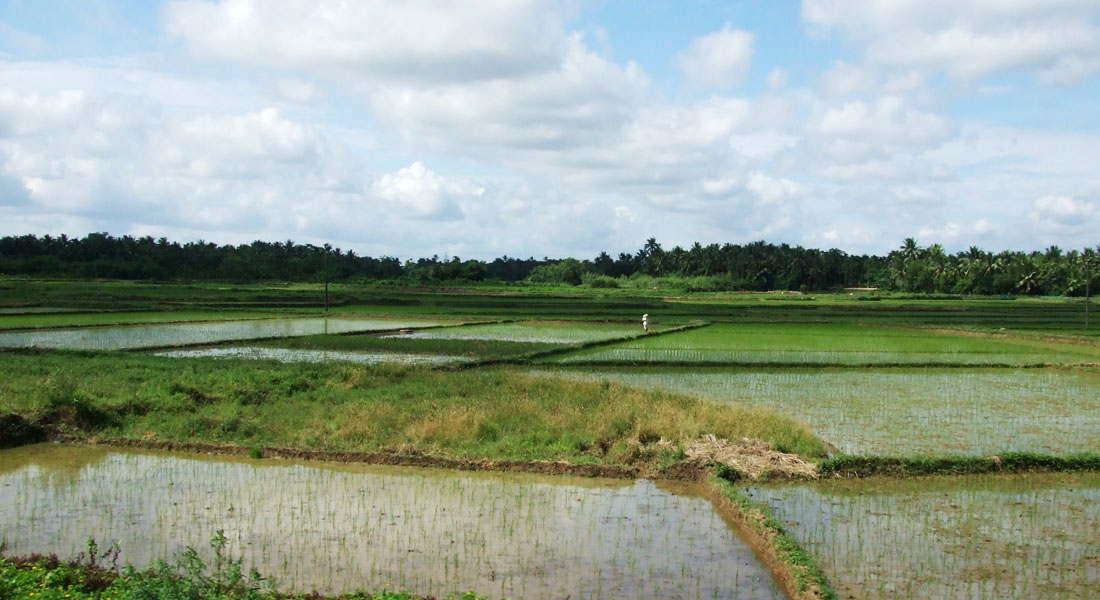
It's a normal weekday but Hainanese from all over can be seen engrossed in their hobbies.
Qiong Hai (琼海)
Qiong Hai is a Chinese city on the east coast. Tourists (if they ever) come to Qiong Hai only for a cheap transit to Bo Ao. Nonetheless, if you were to walk around the city hospital (opposite the bus terminal), you will enter Qiong Hai's bustling local market. Once again, it is a place for cheap local buys - including: wet market produce, bootleg clothings, plastic toys or simply to admire shopkeers sleeping on their chairs or playing board games on a sweltering afternoon (if you come outside june-august, this would not apply). The simple pace of life, is something precious for any traveller to savour.

Who cares about customers? Hainanese are known for their more-relaxed approach to life. Here, 4 ladies can be seen playing "4-color cards".
My grandma loves this game, and money is almost always involved.
Guesthouses are aplenty in Qiong Hai, and the one I stayed is RMB$70 a night and comes with free internet access.
Bo Ao (博鳌)
To get to Bo Ao, get to the opposite side of the main bus terminal and wait for bus number 2. These are city buses, and will connect parts of Qiong Hai to Bo Ao. It costs only RMB$3 per person but will take you a full 1 hour to Bo Ao.
The orientation of Bo Ao is fascinatingly simple. Only 1 major street pans the town. All the restaurants scatter across the street and at night, roadside BBQ (shao kao) stalls will be set up. Bo Ao is known for an array of international cuisine, including Singapore's.
Lonely planet seems to have a positive impression of Bo Ao, describing it as a charming sea side town. I try to agree.
There are two beaches in Bo Ao. One, will cost you RMB$55 to get access to - by taking a ferry. That beach is expensive because it sits at the confluence of 2/3 rivers emptying into the sea. The other one is free, with live seafood restaurants plying the beach.
The pace of life grinds to a complete halt in Bo Ao. We asked a massage parlor if they can provide massage for our tired legs, but the salesgirls are obviously engrossed in mahjong and told us they are busy. Other than the beach and the main street of restaurants and barbers, you can check out the morning market (ask the 3-wheel motorcycle to bring you there, RMB$3), Bo Ao economic forum (RMB$50/entrance on top of a 3-wheel motorbike ride) or a Buddhist museum (which I didn't go).

The ride from Qiong Hai to Bo Ao will bring you past some breathtaking terrain.
Tan Men
Lonely planet briefly covered Tan Men, and so I went there. To get to Tan Men, take another city bus from across the bus terminal. It will cost you RMB$4 and 30 mins. There isn't much to do in Tan Men. It is simply a place for fisherman to paint their boats to haul in their day's catch. However, if you are fascinated with Chinese fishing boats, do take a short trip here. Remember, last bus back to Qiong Hai departs at 5.30pm sharp.

Fishing boats. Tan Men is somewhat known for supplying giant clams and assorted seafood to elsewhere in the mainland.
Getting out
Take a connecting bus at Qiong Hai's bus station to Sanya. Remember to opt for the express highway bus (RMB$30, 2.5hrs). Anything else (local buses, but 40% cheaper) will take you 4 hours.